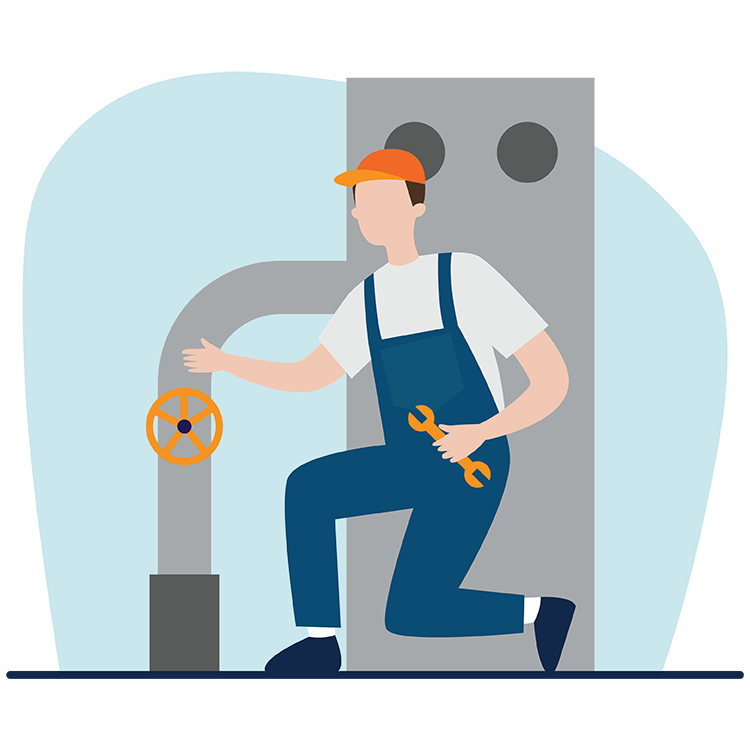Reputable Plumber Alabaster AL for All Your Emergency situation Requirements
Reputable Plumber Alabaster AL for All Your Emergency situation Requirements
Blog Article
A Step-by-Step Guide to Reliable Water Heater Setup for Optimal Efficiency
Starting the job of installing a hot water heater is an endeavor that requires precision and a systematic strategy for accomplishing ideal efficiency. The procedure begins with the crucial choice of choosing the suitable heater customized to the particular demands of your family, considering factors such as size, power, and type resource. When chosen, preparing the installment area to fulfill safety criteria is critical. The trip doesn't end here. As you continue, the intricacies of attaching supply of water lines and establishing trustworthy electrical or gas links await, appealing understandings into making certain effectiveness and reliability.
Choosing the Right Hot Water Heater

Next, consider the dimension and ability of the water heater. It's crucial to analyze your house's warm water needs, which can vary based upon the variety of occupants and their usage patterns. An unit that's as well little may cause not enough warm water, while an oversized model might result in unnecessary energy consumption.
Effectiveness scores likewise play an essential function in option. Seek hot water heater with high Power Factor (EF) rankings, showing superior performance and decreased energy usage. Tankless models, though usually much more costly upfront, deal significant power cost savings in time because of their on-demand heating capabilities.
Preparing the Installment Area
Prior to setting up a new water heater, careful preparation of the setup location is necessary. It's essential to gauge the area thoroughly to suit the water heater's measurements, ensuring ample clearance around the unit for effective procedure and servicing.
Examine the floor for security, as the water heater will certainly require a solid, level surface to operate successfully. If needed, mount a drip frying pan underneath the system to capture prospective leaks or spills, stopping water damages to the surrounding area.
In addition, guarantee that all necessary tools and products get on hand before beginning the installation. This includes things such as wrenches, screwdrivers, a degree, and any type of extra hardware needed for protecting the heating unit and installing. A well-prepared setup area sets the foundation for an effective hot water heater arrangement, maximizing efficiency and safety.
Connecting Water Lines
When attaching water lines to your freshly mounted hot water heater, it is critical to guarantee that all connections are leak-free and safe and secure to keep efficient operation and avoid water damages. Begin by recognizing the hot and chilly water system lines. The cool water inlet is typically marked with a blue tag or a "C", while the warm water outlet is marked with a red label or an "H".
Usage adaptable water heating unit connectors to assist in a much easier setup procedure. Before affixing the ports, place a plumber's tape around the threaded ends of the water heating unit's inlet and outlet pipelines.
Once links remain in place, slowly turn on the major water system valve. Inspect each link for leakages by visually checking and feeling for dampness. Tighten links as needed, and ensure the stress alleviation shutoff is properly set up, securing against too much pressure build-up.
Establishing Up Electric or Gas Connections
Appropriately setting up the electric or gas connections for your water heating system is a critical action to ensure secure and effective operation. For electrical water heaters, start by verifying that the electric circuit is suitable with the heating unit's voltage and amperage requirements.
For gas water heating units, safety and security is critical. Link the gas line to the water heating system using a versatile gas adapter, ensuring it is correctly threaded and sealed with pipeline joint substance or Teflon tape suitable for gas connections.
When links are made, evaluate for any prospective their website leakages. For gas lines, use a soapy water solution to the joints; bubbles indicate a leakage. For electric connections, confirm that all electrical wiring is safe and secure and properly protected, keeping compliance with regional electric codes.
Adjusting and checking for Performance
With the electrical and gas connections safely in position, the following step is evaluating the operational effectiveness of your water heating system. Begin by very carefully transforming on the supply of water and making certain there are no leaks at any of the shutoffs or joints. Once validated, proceed to load the tank, taking notice of the pressure and temperature level setups. It is a good idea to establish the thermostat to a suggested temperature of around 120 ° F(49 ° C) to stabilize power performance and convenience.
Next, carry out a thorough inspection to guarantee the heating elements or burner are operating properly. For electric heaters, use a multimeter to confirm if the aspects are drawing the proper present. In gas designs, observe the burner flame; it ought to be blue and stable, suggesting effective burning.
Adjust the setups as essential to remove inadequacies. Think about applying insulation measures, such as adding a water heater covering, to better enhance performance by lessening warmth loss. Furthermore, check the anode pole's condition, as a scrubby pole can reduce effectiveness and bring about storage tank deterioration.
Conclusion
Effective water heating unit installment is crucial for guaranteeing ideal performance and energy cost savings. Safely linking water supply lines and very carefully establishing up electrical or gas connections reduce possible problems.

Appropriately establishing up the electric or gas links for your water heater is an important step to make sure secure and reliable procedure. For electrical water heating systems, start by validating that the electric circuit is suitable with the heater's voltage and amperage requirements. Connect the gas line to the water heater using a flexible gas connector, ensuring it is correctly threaded and sealed with pipeline joint substance or Teflon tape appropriate for gas connections.
Report this page